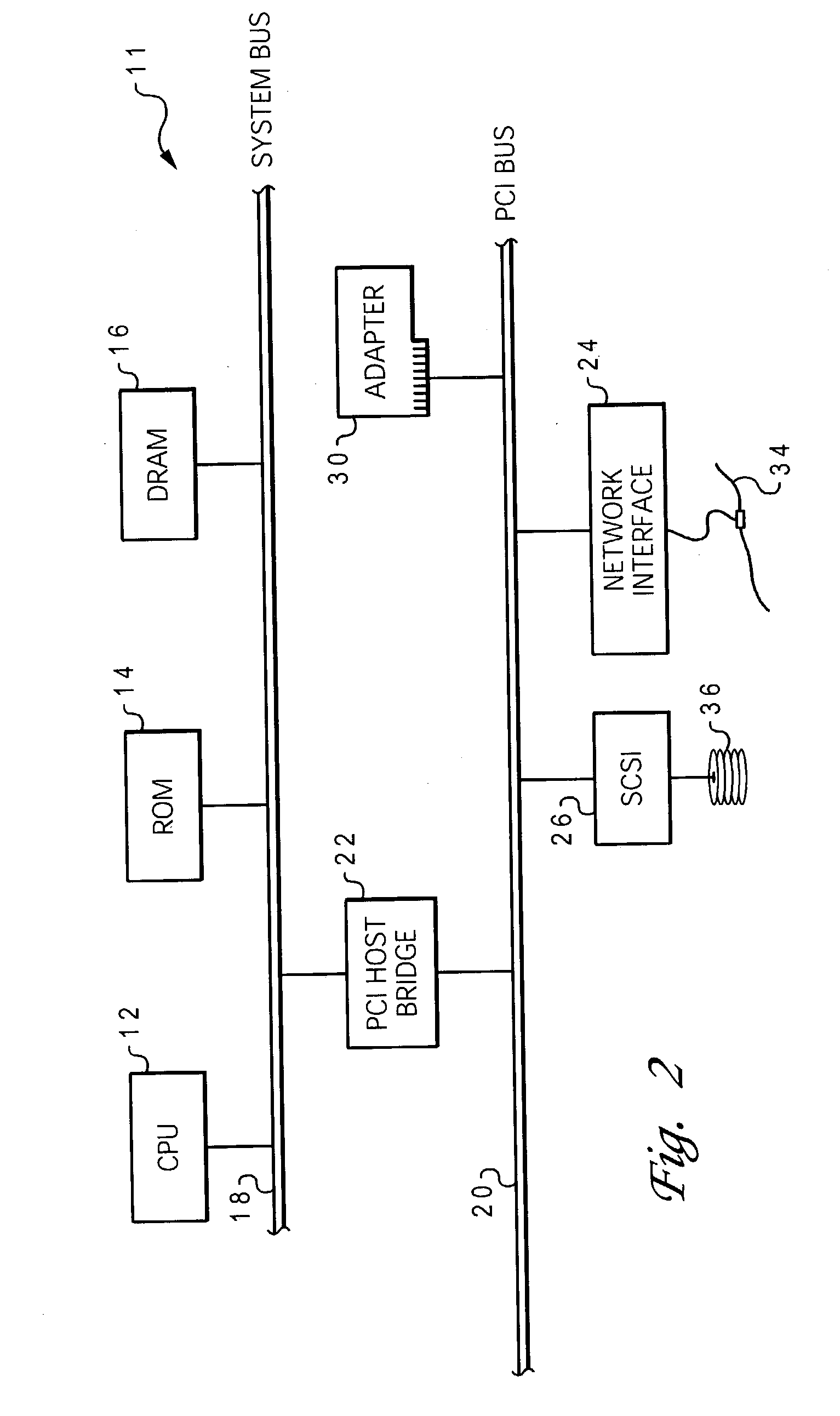Power aware adaptive polling
- Summary
- Abstract
- Description
- Claims
- Application Information
AI Technical Summary
Benefits of technology
Problems solved by technology
Method used
Image
Examples
Embodiment Construction
)
[0023] With reference now to the figures, and in particular with reference to FIG. 2, there is depicted one embodiment 11 of a data processing system programmed to carry out network communications functions in accordance with one implementation of the present invention. The invention may be applied to many different types of network appliances, such as routers, firewalls, or servers, and the following description of system 11 is somewhat generic so as to cover these and other various network devices. Additional details of system 11 will become apparent to those skilled in the art based upon the particular application.
[0024] System 11 includes a central processing unit (CPU) 12, which carries out program instructions, firmware or read-only memory (ROM) 14 which stores the system's basic input / output logic, and a dynamic random access memory (DRAM) 16 which temporarily stores program instructions and operand data used by CPU 12. CPU 12, ROM 14 and DRAM 16 are all connected to a syste...
PUM
 Login to View More
Login to View More Abstract
Description
Claims
Application Information
 Login to View More
Login to View More - R&D
- Intellectual Property
- Life Sciences
- Materials
- Tech Scout
- Unparalleled Data Quality
- Higher Quality Content
- 60% Fewer Hallucinations
Browse by: Latest US Patents, China's latest patents, Technical Efficacy Thesaurus, Application Domain, Technology Topic, Popular Technical Reports.
© 2025 PatSnap. All rights reserved.Legal|Privacy policy|Modern Slavery Act Transparency Statement|Sitemap|About US| Contact US: help@patsnap.com



